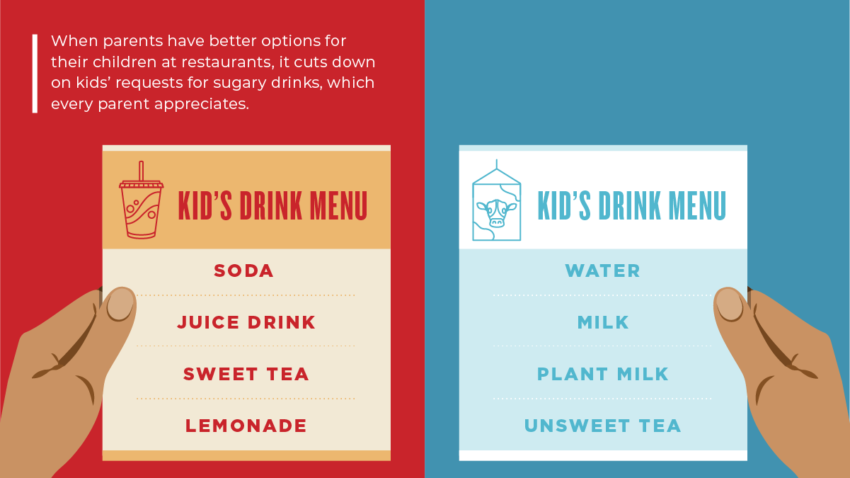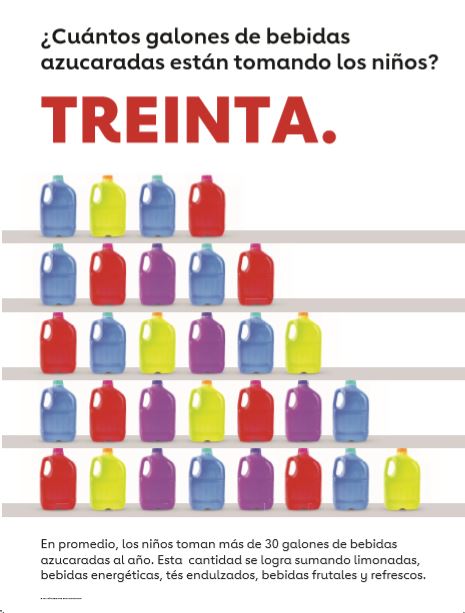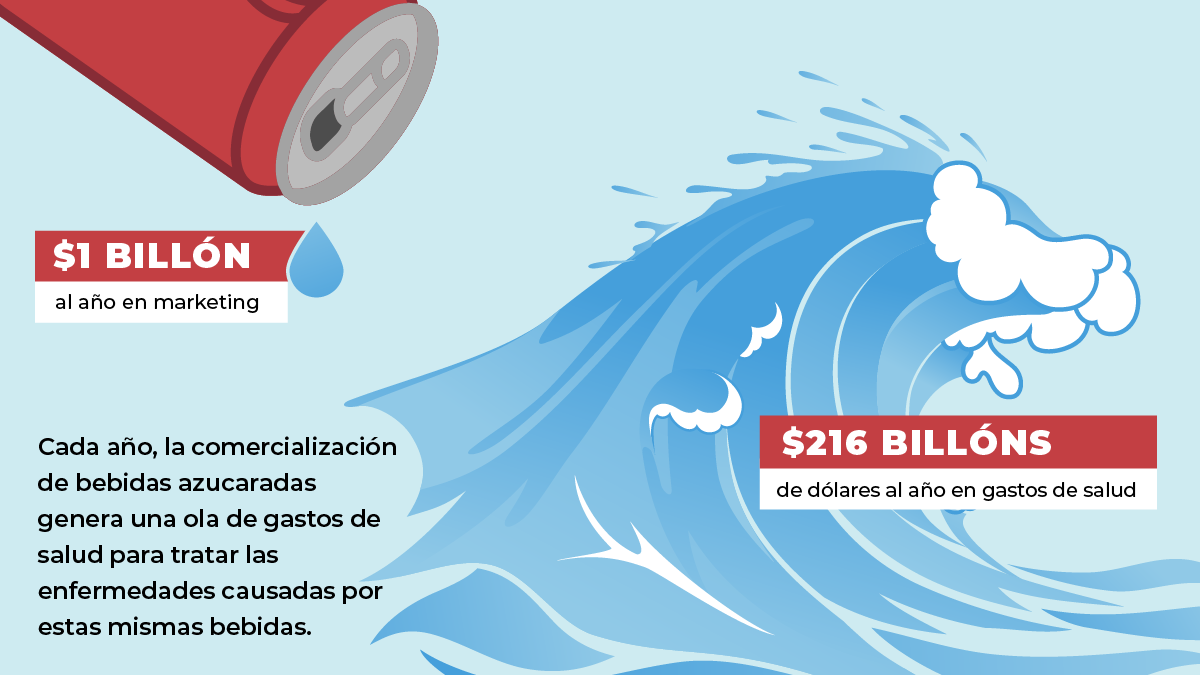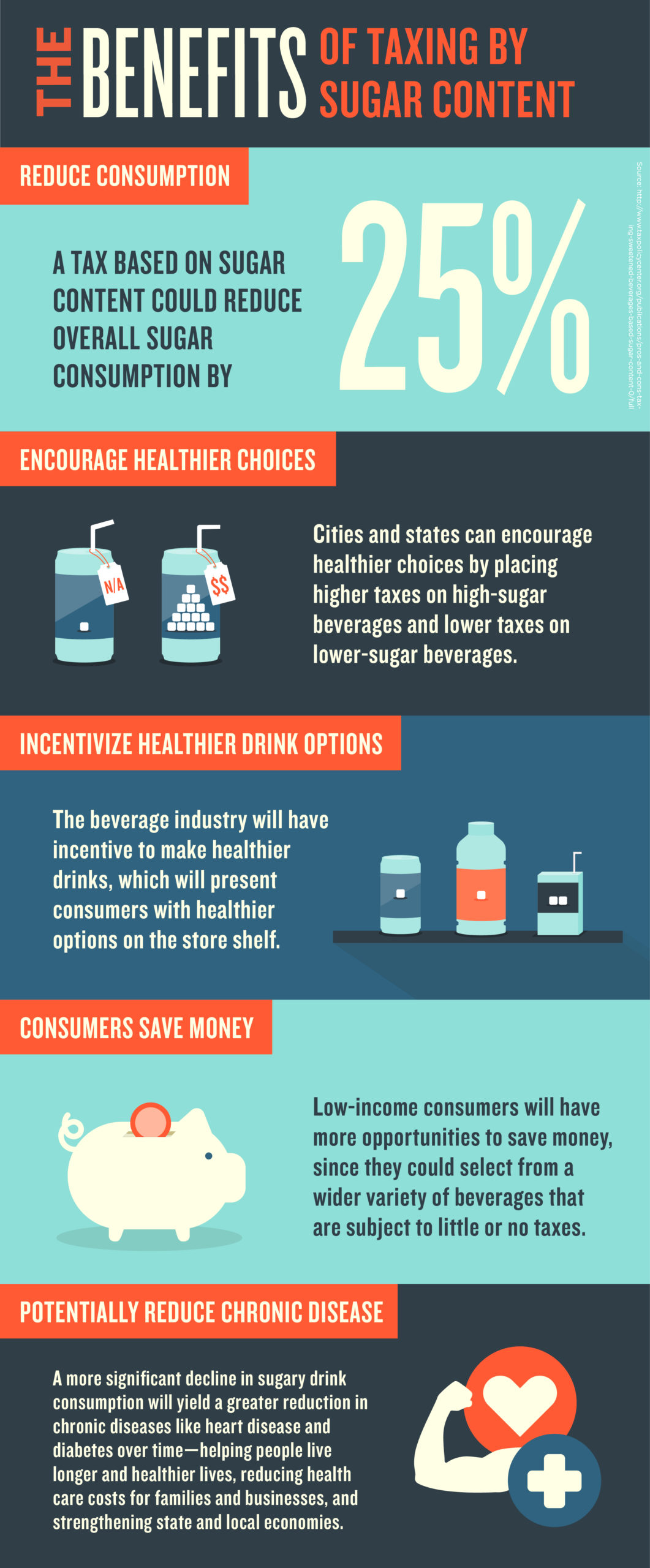
Share On Social!
By Reena Singh
Guest Blogger, Voices for Healthy Kids
Voices for Healthy Kids recently completed research to get the Latino community’s take on sugary drinks and sugary drink taxes.
The research identified several messaging findings and strategies to help engage the Latino community in efforts to reduce the consumption of sugary drinks. Specifically, the research found after receiving more information, support for sugary drink taxes jumped 28%.
So, what did we learn about building relationships and engagement with Latino communities on efforts to increase access to healthy beverages and reduce the consumption of sugary drinks?
1. Materials and Messages Need to Be in Spanish and English
45% of Latinos in the survey reported they speak Spanish daily.
 The majority (62%) of the sample reported they prefer information about sugary beverages be provided in either Spanish (28%) or in both English and Spanish (34%).
The majority (62%) of the sample reported they prefer information about sugary beverages be provided in either Spanish (28%) or in both English and Spanish (34%).
Also, support for a sugary drink tax was higher among respondents who took the survey in Spanish relative to English survey takers.
Because of this, campaigns should prioritize using both languages when doing outreach.
2. Engage Grandparents and Moms
Our research identified Latina mothers and Latino grandparents as important audiences when it comes to efforts to reduce sugary drink consumption.
We found that these groups have higher support for sugary beverage taxes than Latinos overall.
When asked what was most important when offering snacks and meals to their grandchildren, 68% of grandparents reported the health of their grandchildren.
Latino grandparents are much more likely than Latinos overall to identify the following statement as a reason to support a sugary beverage tax: “Every child deserves to grow up healthy which means promoting healthy drinks like water and plain milk instead of sugary drinks that can lead to long‐term health problems.”
Moms’ support increased by 78% when we talked about how tax dollars can be invested back into the community to support community priorities like healthy food access, clean and safe drinking water, and increasing healthy food options in schools.
3. Build Relationships with Trusted Community Messengers
The survey identified Hispanic or Latino nurses, doctors and other medical professionals, teachers and educators to be the most trusted sources of information/messengers about sugary drinks and sugary beverage taxes.
 Community organizations that work directly with the Latino community also tested well as reliable sources of information.
Community organizations that work directly with the Latino community also tested well as reliable sources of information.
It is important to stress that these messengers need to be Latino and from the community. This means campaigns must build relationships early with Latino medical and education professionals and trusted local organizations.
4. Use Messages Focused on Health Impacts of Sugary Drinks, Health of Children, Revenue for Community Priorities
Survey respondents were moved by messages focused on the harmful health outcomes, such as type 2 diabetes, associated with sugary drink consumption.
This was particularly persuasive among parents, Latinas and grandparents.
The high performance of messages focused on health implications associated with sugary drinks was driven by the high inequities Latinos face. For example, when asked “have you, or anyone you know, been diagnosed with Type 2 diabetes?” Seventy percent of respondents know at least one person.
Another effective approach is to ensure campaigns include community voices – including to determine how tax revenues are used.
Messages focused on tax revenue going back to the Latino community increased support for a sugary drink tax – for example if sugary drinks are taxed, the revenue could go back to the Latino/Hispanic community to support important programs such as increasing healthy food access, clean and safe drinking water, increasing healthy food options in schools, and other programs that our communities desperately need.
5. Share How Taxes Have Worked Elsewhere
Nearly half of Latinos in the national sample believe a tax on sugary drinks is a good idea, but that it will not work because people will continue to buy them if they want them. This skepticism is particularly high among Latinos over the age of 60 and Latino immigrants.
 Outreach and messaging could include how sugary drink taxes in other locations have decreased purchases of sugary drinks and how the revenue has been used to support community efforts. Voices for Healthy Kids has several examples you can use to make this point.
Outreach and messaging could include how sugary drink taxes in other locations have decreased purchases of sugary drinks and how the revenue has been used to support community efforts. Voices for Healthy Kids has several examples you can use to make this point.
Another example to include is Mexico’s experience with a sugary drink tax. Talking about Mexico resonated strongly amongst respondents of Mexican-origin, immigrants and Spanish speaking Latinos.
Latinos are mixed in their initial support for a sugary beverage tax in their communities, but their support improves significantly after being informed about the health outcomes associated with sugary drinks and that tax revenue could be used for community programs.
We hope this new research will be another useful resource for policy campaigns aimed at improving access and availability to healthier drinks in communities. To continue growing your knowledge on all-things sugary drinks, explore our Sugary Drink toolkit, Message Guide and our collection of online trainings.
Editor’s Note: Voices for Healthy Kids is an American Heart Association Program that works around the country to improve or create equitable policies that will make the places kids, live, learn, and play healthier.
Explore More:
WaterBy The Numbers
74
percent
of Latino kids have had a sugary drink by age 2 (vs. 45% of white kids)



